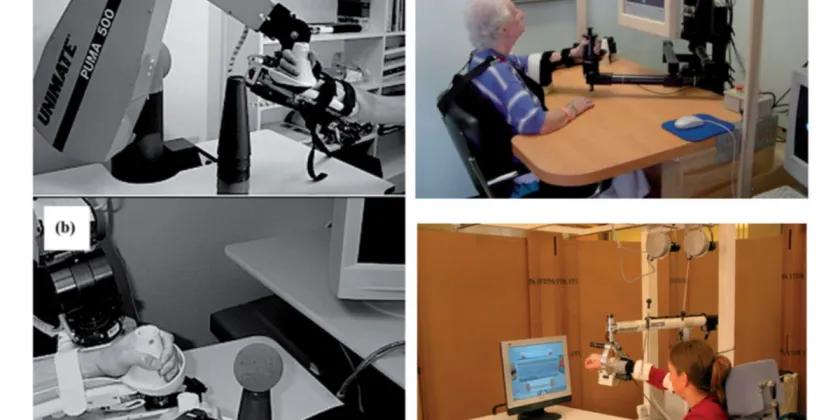A review of technological and clinical aspects of robot-aided rehabilitation of upper-extremity after stroke

Note: A review on Robot-aided Rehabilitation was done during 2011 – 2013 when Madi was a master’s student.
Abstract
Cerebrovascular accident (CVA) or stroke is one of the leading causes of disability and loss of motor function. Millions of people around the world are affected by it each year. Stroke results in disabled arm function.
Restoration of arm function is essential to regaining activities of daily living (ADL). Along with traditional rehabilitation methods, robot-aided therapy has emerged in recent years.
Robot-aided rehabilitation is more intensive, of longer duration, and more repetitive. Using robots, repetitive, dull exercises can turn into more challenging and motivating tasks such as games. Besides, robots can provide a quantitative measure of rehabilitation progress.
This article overviews the terms used in robot-aided upper-limb rehabilitation. It continues by investigating the requirements for rehabilitation robots. Then the most outstanding works in robot-aided upper-limb rehabilitation and their control schemes have been investigated. The clinical outcomes of the built robots are also given, which demonstrates the usability of these robots in real-life applications and their acceptance.
This article summarizes a review done along with research on the design, simulation, and control of a robot for use in upper-limb rehabilitation after stroke.
- Check out the full article HERE!
